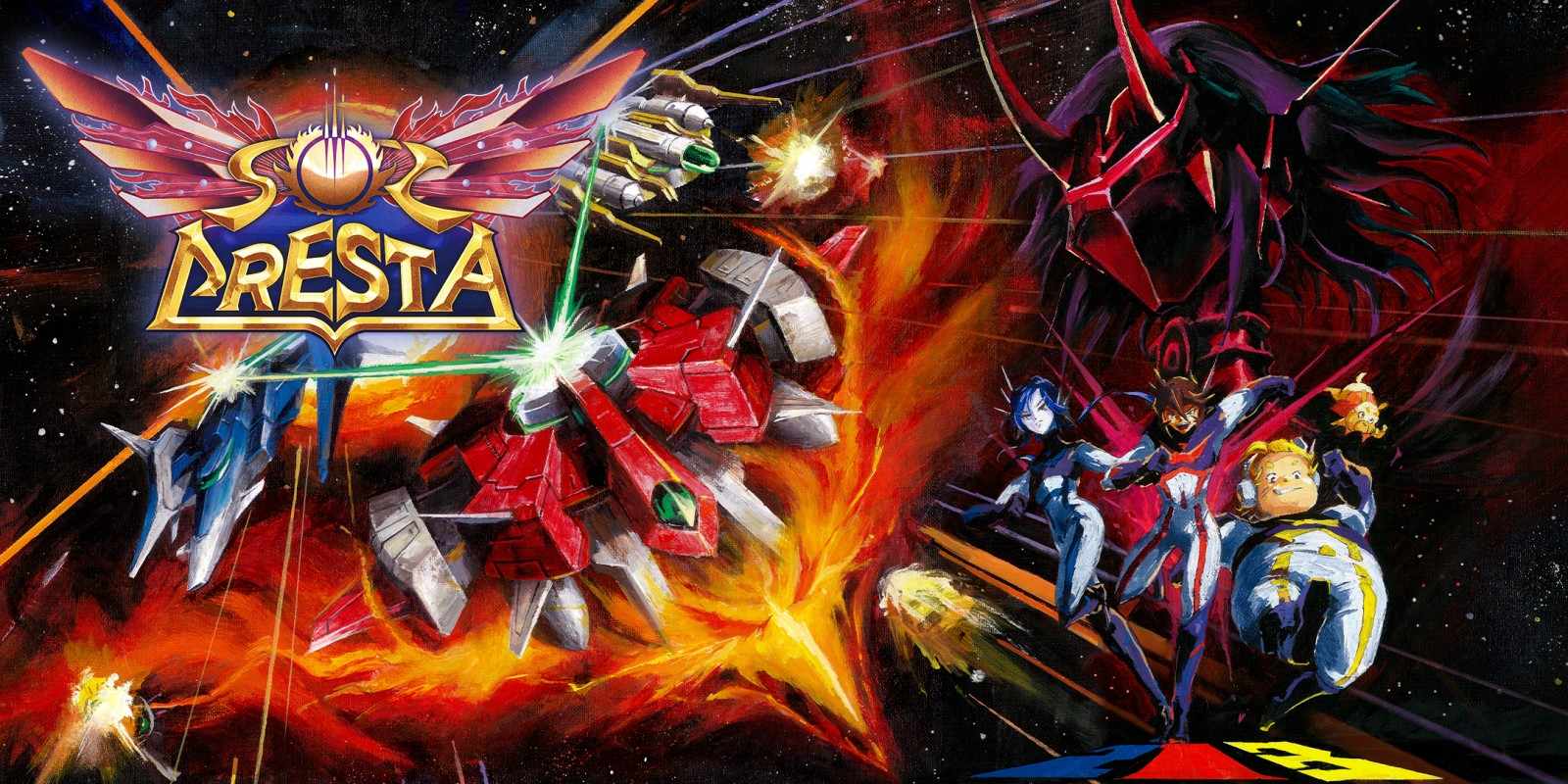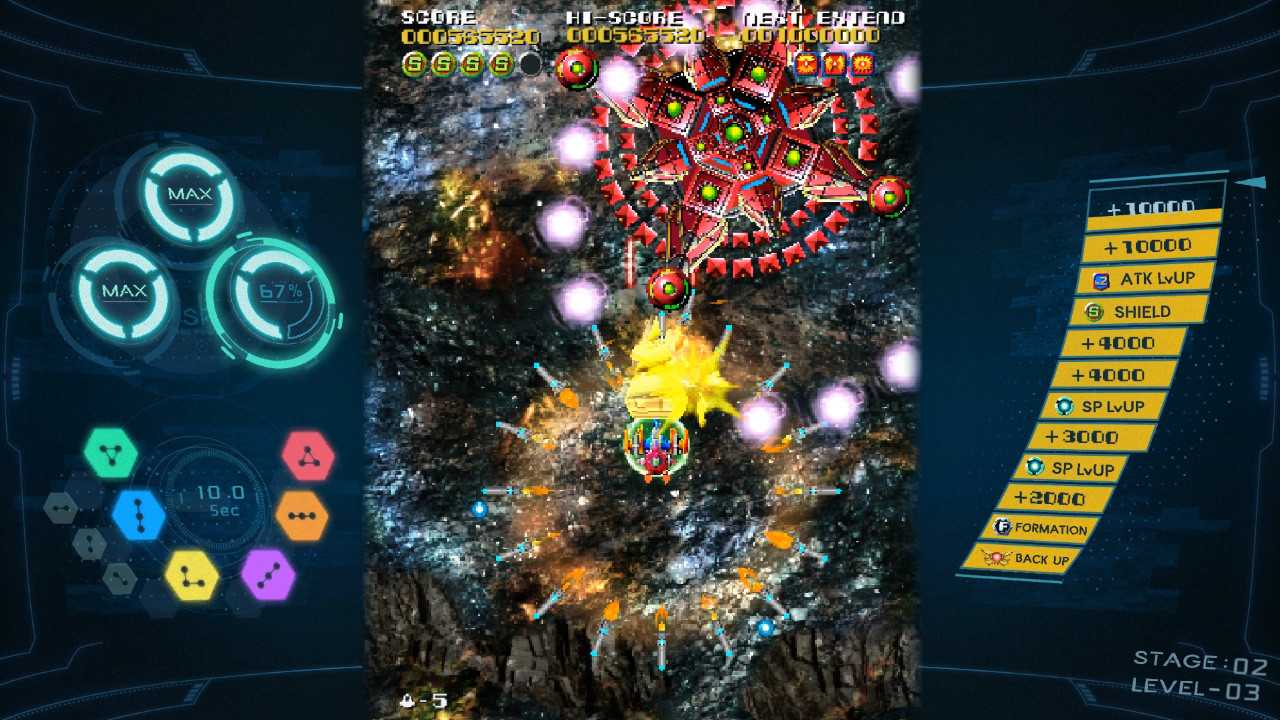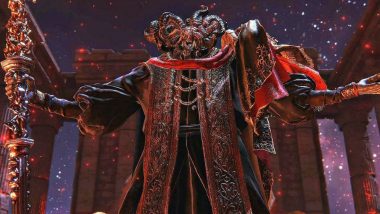Give Sol Cresta time to marinate and it will take you on a fantastic ride

Sol Cresta had an interesting start. Announced on April Fools as a continuation in the long dormant Cresta series, it seemed like a well-made prank that brought more attention to Cresta than it had seen in decades. But it was more than a prank. We were getting a bona fide vertical shmup from PlatinumGames as a part of their Neo-Classic Arcade initiative.
It’s kind of a big deal to get an arcade inspired shooter from a big-name developer in this day and age, and Sol Cresta was even getting coverage from major games media outlets, though it quickly tapered off in the West. After the game released, there was a brief discourse around its price and how much shmups are worth (this is a whole other story) and the game seemed to disappear, leaving the leaderboards open for players in Japan, where the game has been more celebrated. The story doesn’t have to end here, though. Maybe Sol Cresta won’t spread shmup fever across gaming as a whole, but PlatinumGames delivered the goods, so if you’re a fan of shooters, or even just action games in general, you owe it to yourself to give it a look.
Like any good shooter, Sol Cresta has a depth to it that isn’t immediately apparent. It’s also long for the genre. The PlatinumGames name may have initially driven up the interest among new players who ended up balking at the $40.00 price for an hour-long arcade mode, but that much content likely has veteran high score chasers begging for mercy. I was skeptical as well after learning that the Story Mode would be sold separately as DLC. But after digging into the game, its depth slowly revealed itself to me. I wasn’t just memorizing enemy placement. The mechanics of the game were sinking in and becoming second nature.
And there are a lot of core mechanics in Sol Cresta, such as ship formations, Formation Shots, Command Shots, “Sol Time” (slowing down time for moving into formation), the Sol Gauge, and the Formation Gauge. They’re all intertwined and need to be managed by the player for success. And once you get the hang of things, there’s a lot of room for experimentation and interpretation in the stages, which may sometimes look like a bullet hell game if you let things get out of hand but are actually more old school in their inspirations. Considering the game wears its early-80’s inspiration on its sleeve in many other ways, this may not be a big surprise.

The point of the above is basically to say what looks haphazard or overly punishing at first actually has intention behind it that becomes more apparent as you play and improve. Sol Cresta isn’t easy. However, when you consider its length, shield system, and difficulty options, you’ll likely get further in it than many other shmups before they decide to tighten their grip. Sol Cresta isn’t trying to kick you off the arcade machine or get another quarter. It slowly ramps up the difficulty while still requiring that you play by its rules if you want to complete it. When you consider all the mechanics at play, it can be a lot to contend with before you have the skills to complete a loop, but I found the difficulty curve to be more motivating than punishing.
Sol Cresta does a good job balancing the old with the new. There are homages to Moon Cresta, Terra Cresta, and likely more from other games in the series that I didn’t notice. You experience everything from familiar enemies and movement patterns to transposed music arrangements and classic jingles. It feels like a continuation of the series, despite bringing its own twists such the “free-form docking” system, that aren’t just new to Cresta, but new to the genre. Describing something as neo-classic sounds kind of nebulous, but I think they did it. I have seen the graphics be criticized pretty harshly in some reviews, but I think if you familiarize yourself with the older titles in the series, you’ll see what they were going for and how it meshes with the idea of being neo-classic. It’s not trying to be the R-Type Final 2 of Cresta, and I wouldn’t be surprised if this combining the old with the new extents to the upcoming titles in the Neo-Classic Arcade Series.
The game isn’t without its faults, though. There have been reports of bugs, some of which I experienced myself after putting in roughly 25 hours of gameplay when trying the Score Attack – Unlimited mode. One was minor with the music not playing during a section of a stage. However, I have had one run end with a boss disappearing off screen leaving me in an endless loop with no way to continue. Honestly, it wasn’t a huge deal when considering how much I had already played the game, but to players that came across them sooner, it could be a serious flag pointing to a lack of polish. Fortunately, the game’s creative director Hideki Kamiya has been very upfront on Twitter and in public appearances like Shooters Fest 2022 about these issues and that the team is working to fix them while making QoL adjustments.
I could go on about the excellent, catchy music and how it gradually raises the stakes as you progress. Or about the solid Caravan Mode and wealth of Score Attack leaderboards. But I don’t want to drag this out too long. What I’m trying to say is if you have an interest in shooters or action games, Sol Cresta is definitely worth your time. The game can help beginners get their feet wet or make experts pull their hair out, while all of us in between can try to stake our claim on the leaderboards. Great games seem to get their due in time, and I think Sol Cresta will go down as a shooting classic.
Fun Fact: At the end of Stage 5 – Terra, you can see the Umeda Sky Building in the background meaning this stage takes place over Osaka, Japan.




